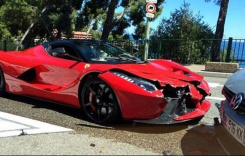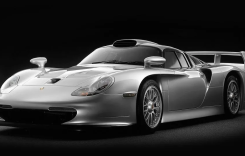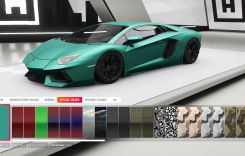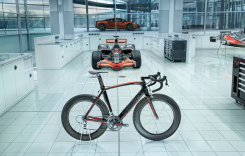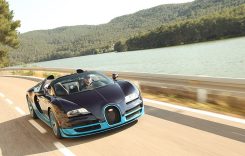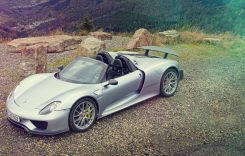The much anticipated 2011 Husqvarna dirt bikes have finally arrived. The chain of events that led to the new 449 models landing on U.S. soil has been long and grief-filled. By now, everyone knows the less than flattering story of BMW’s ill-fated venture into the realm of true off-road motorcycles with the G450X. It started with a bike that was thoroughly bashed by the press. After that came the rocky relationship and breakup with world champion, David Knight, who could never come to terms with the handling of the Beemer.

Despite so much bad publicity, BMW was eventually able to make the bike account very well for itself. In Europe, it won a number of extreme events in the hands of Andreas Lettenbichler and Chris Birch. Ultimately, many aspects of the G model, such as the motor, garnered a fair amount of praise, but the model itself was past the point of revival, especially in the vital U.S. market.
The 2011 TXC449 features German engineering under the guiding hands of Husqvarna’s parent company, BMW.
As the parent company to Husqvarna, it ultimately made the best business sense for BMW to step out of the dirt bike market and hand it off to the Italians. The Husky 449 line of bikes are now built around the motor BMW designed for itself. While engineered in Germany, this motor is built by Kymco in Taiwan.
We got the chance to ride these new models out in the Mojave desert at the old mining town of Randsburg, CA. From the first moment that the TXC449 fired to life, I found the motor a genuine joy to ride. It starts right up, shifts well and has great power delivery. The 98mm X 59.6mm short stroke motor is very easy to ride. With a fuel injected twin cam, four-valve head this is a very modern-feeling powerplant.
The word that is going to be tossed around most with this new bike is “traction.” It has it in spades. Like any respectable dirt biker I quickly got side-tracked by the first big hillclimbs we encountered. While the TXC never feels like a real powerhouse, it motored right up everything I dared to try.
The HuskyTXC449 contains several unique design elements such as a top-mounted linkage system and a gas tank split into two parts.
It is smooth off the bottom and revs to a respectable peak output. The stock Akrapovic exhaust keeps the sound to a very acceptable level. The Keihin EFI system’s 46mm dual throttle body gives crisp and smooth responses to the rider input.
A six-speed transmission shifts smoothly and adds versatility to the motor. A Brembo hydraulically actuated clutch is mounted directly to the end of the crankshaft. In my short time on the bike, both worked excellently. Directing our attention to the chassis, things really start to get interesting. At first glance the chromoly steel frame looks fairly traditional. However, at closer inspection nothing is quite where you would expect to find it.
This starts with Husky’s Coaxial Traction System (CTS). The countershaft sprocket is located on the swingarm pivot. The intended advantage is to reduce the torque effect from the motor acting upon the chain and swingarm. With the countershaft in this position, the chain tension remains constant throughout the shock stroke.
The design claims to transfer downward force to the wheel under acceleration and eliminate squat and excess suspension movement. There are clearly some unique aspects to this design, but more miles will be required to come to an understanding of all the effects on handing.
The next thing you notice on the chassis is the new top mounted linkage system. Curiously, the Husky literature says almost nothing about intentions of this design. But it clearly keeps the linkage up away from rocks and logs. Additionally, the design should also stay cleaner and should therefore require less maintenance.
A six-speed transmission in conjuction with a Brembo hydraulically actuated clutch allow for smooth shifting.
From here the chassis gets even stranger. The gas tank filler is located behind the seat. This actually fills two tanks: first the primary cell under the seat and then it bleeds off to the clear secondary tank located alongside the motor and EFI body. It takes a little over a minute and a half to properly fill the entire system.
The air filter sits up front behind the right-side shroud and has a direct air intake above the radiator on the same side. Servicing requires removal of the shroud, but Ty Davis tells me that in testing the filter stays incredibly clean. The seat runs the entire length of the frame. Comparing it to a board is not an entirely inaccurate description as it is flat and hard. The rest of the components are top shelf choices: Brembo hydraulics and brakes, Galfer rotors, Excel wheels, Magura SX bars and Domino grips. The shift lever is well placed. The rear brake pedal has to clear the clutch slave cylinder on the end of the crank and therefore hangs out too far in the air.
All the 2011 449 models feature Kayaba suspension components. The 48mm closed cartridge fork of the TXC model uses internals that are similar to those of Yamaha from a few years ago. The shock has all the standard features, including high and low speed compression adjustment. Travel at both ends is 11.8 inches.
So how does it ride? Well, it is pretty good. First of all, there were no ugly surprises at all. Everything seems to be in about the correct place and it all works.
With a strong chassis the Husky performs well in open spaces, but hangs during quick directional changes.
If you’ll indulge me in an analogy, here it goes: you know that game where you take a box of parts and give it to different teams to see what they can build? Well, when this box went to the Swedes they came up with the Husaberg. When it went to Italy they built the bike you see.
The reason I say this is that both bikes have plenty of things that look and feel similar to each other. The motors are comparable in power and delivery. From the cockpit the bikes feel similar and many of the components and controls are the same. As both claim to have achieved “mass centralization,” the fuel tanks and air filters are in similar locations. They both even have the same useless grab handle.
If the Husaberg is all about turning and quick direction changes, the Husqvarna is more or less about chewing up wide open spaces. Where ‘Berg owners have struggled trying to make their bikes work well in the desert, the Husky is a natural.
So let us get back to the question of how it rides. The motor is very nice; just don’t get in a drag race with any 450 motocrossers. The chassis is very stable. The wide stance footpegs give great leverage to make minor directional changes. Big turns take a little more forethought. All that stability makes the handling feel sluggish at times.
The TXC449 has the makings of an enduro bike but is much more responsive due to its lighter mass.
The suspension seems in the ballpark, but there were a couple of distractions during our ride. The spring rates are good and keep the bike composed on big hits. The closed chamber fork will deflect occasionally, particularly off the side of rocks. The rear shock has the sensation that it binds up about two thirds of the way through the stroke and then the whole bike wallows. I will want a lot more riding time to get everything settled in and then work on the settings more before making any conclusions.
In many ways the 2011 Husqvarna TXC449 feels like a traditional enduro bike, almost like an older RFS KTM. Yet, the motor is far more responsive due to the EFI and lighter mass. This bike is going to earn high marks for those looking for an easy to ride, open terrain bike, no stabilizer required.
As for some of the other unique design elements only time will tell how they perform in the long run. So stay with us as we put our Husky though its paces to see how it holds up to the toughest tracks and trails we can find.
2011 Husqvarna TXC449 Specifications:
Engine: DOHC, 4-valve liquid-cooled Single
Displacement: 449.6cc
Bore x Stroke: 98 x 59.6mm
Fueling: EFI Keihin D46
Compression Ratio: 12:1
The closed chamber forks performed well overall but experienced issues over rocks where it would occasionally deflect.
Ignition: Digital with adjustable advance
Clutch: Wet multi-plate with hydraulic control
Transmission: 6-Speed
Frame: Double beam, double cradle high resistance chromoly steel frame (round and elliptical). Light alloy sub frame.
Front Suspension: Kayaba 48mm closed cartridge fork featuring 11.81 inches of front wheel travel. Upside down telescopic fork also features compression and rebound adjustment.
Rear Suspension: Kayaba single shock with remote reservoir, adjustable spring preload, compression (high and low speed) and rebound damping. Shock delivers 11.81 inches of travel.
Front Brake: Brembo 260mm wave rotor, dual-piston floating caliper; Hydraulic actuation.
Rear Brake: Brembo 240mm wave rotor, single-piston floating caliper; Hydraulic actuation.
Front Tire: 80/100-21
Rear Tire: 100/100-18
Wheelbase: 58.66 in.
Overall Length: 86.93 in.
Overall Width: 32.28 in.
Seat Height: 37.91 in.
Ground Clearance: 13.19 in.
Fuel Capacity: 2.51 gallons
MSRP: $7999

